Whether we’re talking about your potted houseplants or your seasonal vegetable garden, there’s an entire ecosystem of microscopic living organisms that exist within the soil of your plants. Sometimes, when that ecosystem becomes unbalanced, certain fungi, mold, or mildew can start to grow.
Not all mold is automatically bad. But when there is an imbalance of fungus and mold on plant soil, it can be:
a) an indicator to you that something is off, and
b) potentially harmful to you and/or your plants and pets
In this article, we’re going to talk about what causes mold on plant soil, what you can (and should) do about it, and how to prevent it from happening again.
Table of Contents
- What are the Different Types of Mold?
- What is the White Mold on Your Plant?
- Is Mold on Soil Bad for Plants?
- Why Is Mold Growing on My Soil?
- How to Prevent Mold on Top of Soil
- Make Sure Your Plants Have the Proper Living Conditions
- Use Cinnamon
- Apply Neem Oil
- Try a Natural & Non-Toxic Fungicide
- Try Baking Soda
- How to Get Rid of Mold in Houseplant Soil
What are the Different Types of Mold?
First, it’s important to note that mold can be more or less problematic (both to plants and people) depending on the type. There are actually over 100,000 different types of mold, and many of them are crucial to the overall functioning of our ecosystems. Some of them are dangerous and others are completely harmless.
For example, you’ve probably heard of black mold, or Stachybotrys chartarum, before. This kind of mold can be extremely toxic to people. It’s typically found in water-damaged buildings and it is not one of the typical variations of mold on plant soil (thank goodness!).
Aspergillus is another type of potentially toxic mold that you may have heard of before. It’s usually grey or green in color and can cause allergic reactions or lung infections in many people.
You’ve probably heard of Penicillium before as well—it’s one of the most common genera of mold in the world and is how the antibiotic Penicillin was discovered. Some people have mild to severe allergies to Penicillium.
Mold can vary by color, from black, brown, and green to orange, yellow, and white. Unfortunately, you can’t tell whether or not mold is toxic by just looking at the color.
All of that being said, all people do not react the same when exposed to different types of mold. One may have a slight allergic reaction to one strain, another individual may become severely ill, and another still may have no reaction at all. Furthermore, the type of conditions that create even harmless mold can potentially cause greater issues over a longer period of time, for both plants and humans.
Usually, when enough mold grows to where it’s visible to your naked eye, that’s already an indicator that there’s an imbalance that needs to be addressed. It’s best to prevent and get rid of any type of mold or fungus you see growing on your plant soil as soon as possible.
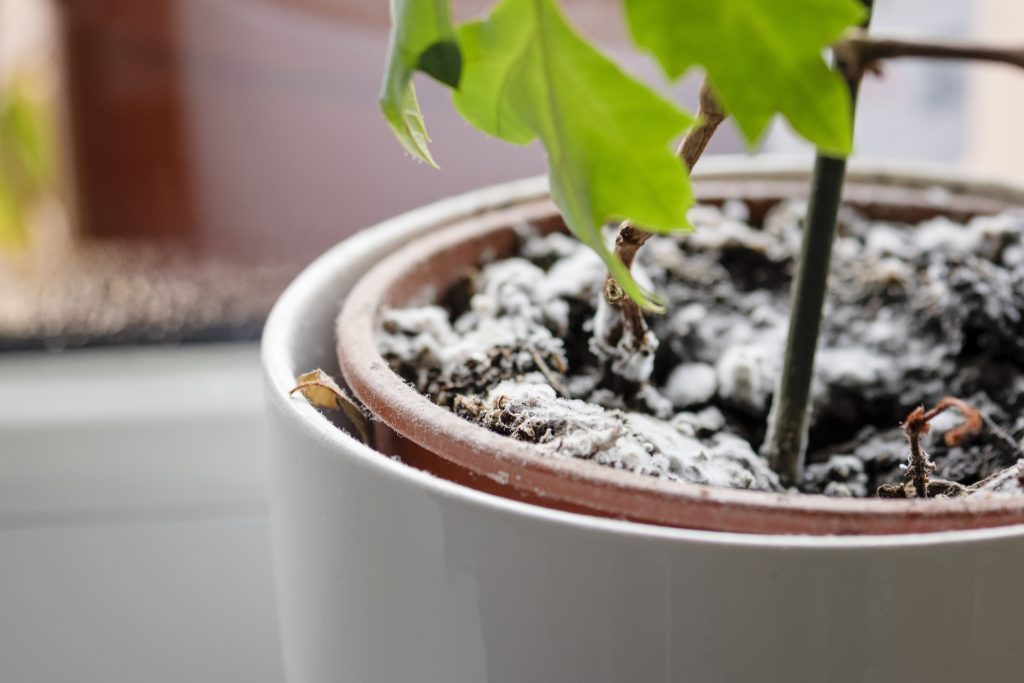
What is the White Mold on Your Plant?
If there are over 100,000 different types of mold, then how do you know which kind is growing on your plant soil?
Without sending it to a lab, it’s impossible to determine the exact strain of mold that’s growing on your plant. However, there’s a good chance that it’s a Saprophytic, which is a category that includes several different types of mold. Some of the most common types of Saprophytic mold are Aspergillus, Penicillium, and Trichoderma. As noted above, these types of mold can be potentially toxic to humans, so you should try to remove the mold as soon as possible.
It’s also worth noting that mold on plant soil can either be “active” or “dormant.” Active mold on plant soil tends to be more fluffy and soft-looking, while dormant mold has a dustier and flatter look. It’s important to know that dormant mold isn’t necessarily less toxic.
Is Mold on Soil Bad for Plants?
Mold spores are always going to exist in and around nature—and that includes the soil. Mold and fungi are a part of a healthy soil biome and are part of what makes soil what it is. However, as with almost anything, problems can arise when things get imbalanced.
Depending on what type it is, mold on plant soil may or may not be “bad” for your plant. Some types of mold are relatively harmless, while others can cause disease. Regardless, an excess of fungi and mold growth usually indicates that your plant is growing in conditions that could definitely be harmful to it, especially in the long run. Let’s look at some of those conditions that may cause mold growth on your houseplants.
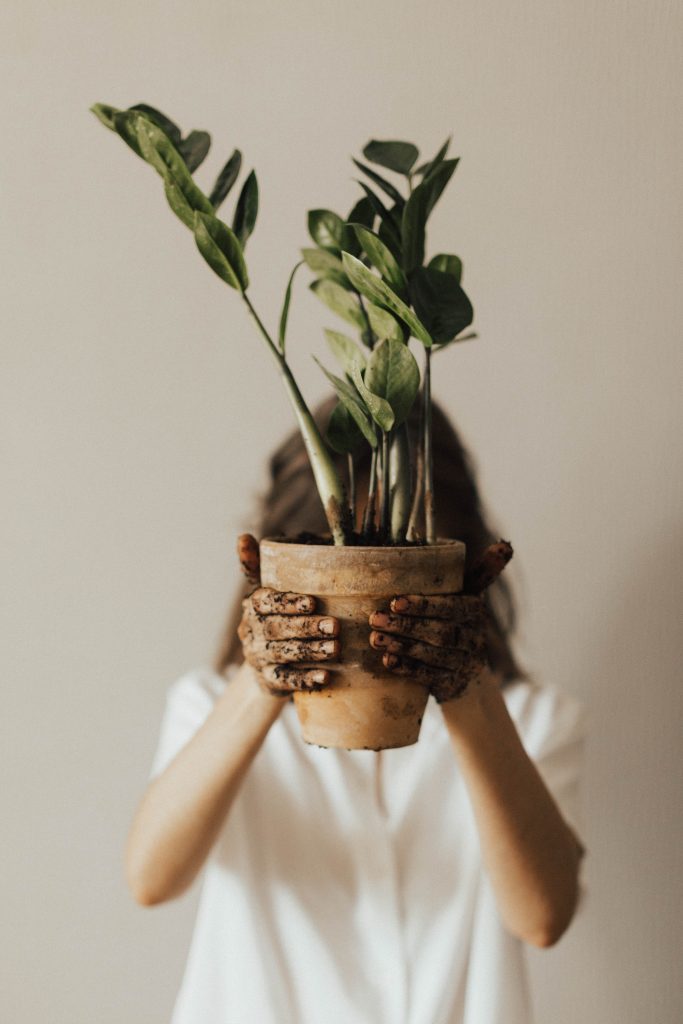
Why Is Mold Growing on My Soil?
Mold thrives in dark, wet environments—a situation that’s easy to create with soil! Here are some things that can cause mold and other fungi to grow on your plants:
Overwatering & Poor Drainage
This is an easy mistake for many plant owners and is one of the most common causes of mold on plant soil. Too much water can cause mold growth, root rot, and eventually kill your plant if you’re not careful. Make sure you research how much water your specific plants need and pay close attention to other signs of overwatering, like yellowing leaves. In general, you shouldn’t water your houseplants at least until the top layer of the soil is dried out. Plants that are outside will usually need to be watered more often compared to indoor houseplants.
Along those same lines, make sure your pot has drainage holes in it so that excess water can flow out the bottom of your pot instead of pooling down at the roots.
Additionally, make sure you have the correct size pot. A pot that’s too big for your plant can leave too much water sitting in the soil that the smaller roots aren’t able to drink up fast enough.
Lastly, make sure you are using the correct kind of soil for your plants. Soil that’s too dense will hold too much water and won’t drain fast enough. Different types of plants need different types of soil. For many houseplants, a potting mix like Good Dirt is going to be a safe bet. For succulents, which need a more well-draining type of soil, you can use something like Bonsai Jack’s Succulent Soil. Be sure to research what type of soil your specific plant needs, and you can always mix your own!
Poor Air Circulation
If you have your plant sitting in the corner where there is little to no air flow, bring it out into the open! Air circulation helps to dry the soil out in between waterings.
Not Enough Sunlight
Not getting enough sun could encourage those dark and damp conditions where mold thrives. Making sure your plant gets enough sunlight will help the soil dry out between waterings and will help make sure the plant has the resources it needs to actually utilize the water in the soil and keep an overall balanced and healthy ecosystem to live in.
Contaminated Soil
There’s a chance that the mold growing on your plant is not because of anything you’ve done wrong. Depending on how it’s been stored in the past, the beginnings of mold growth can start before the soil even gets into your hands. If you see mold in your soil, don’t try to use it. Unfortunately, you might not be able to tell if the soil is contaminated since it’s not always visible. If you can’t figure out what is causing the mold on your plant soil, try repotting it with fresh soil.
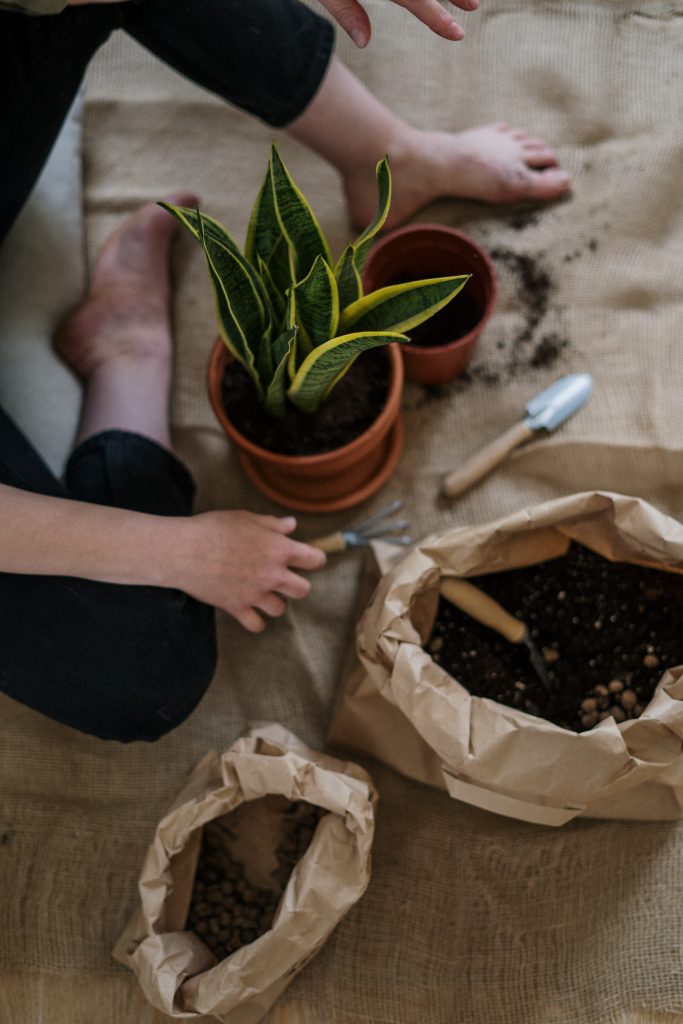
How to Prevent Mold on Top of Soil
The best way to deal with mold overgrowth on your plants is to prevent it! Here’s how to do that.
Make Sure Your Plants Have the Proper Living Conditions
To prevent mold overgrowth on your plants, make sure to do some light research on each type of plant to make sure they each are living in the proper conditions, which include:
- the right kind of (well-draining) soil
- the right amount of sunlight
- the correct watering schedule (For most plants, don’t water until the top layer of the soil is dried out. Just stick a couple of fingers into the soil to check.)
- the proper size pot (not too big)
- a pot with drainage holes (You can always drill holes into your pot if it doesn’t come with them!)
- you can also add a layer of stones at the bottom of your pot so that water has a place to pool
Use Cinnamon
Cinnamon is said to be a natural anti-fungal, so simply sprinkling some on the top of your plant soil can help decrease the likelihood of mold and mildew growth.
Apply Neem Oil
Neem oil has been used as a natural anti-fungal as well and pest repellant for thousands of years, and has many different uses in organic gardening. Captain Jack’s is a good one to check out.
Try a Natural & Non-Toxic Fungicide
If you want to use a fungicide, skip the toxic synthetic chemicals. Try a brand like Safer instead.
Try Baking Soda
This solution is more relevant for mildew on the actual leaves of your plants, as opposed to just the soil alone. Dilute one tablespoon of baking soda per one gallon of water, pour into a spray bottle, and spray your plants. You can also 1/3 teaspoon of dishwashing liquid to help the baking soda stick to the surfaces of the plant.
How to Get Rid of Mold in Houseplant Soil
Many might be tempted to simply brush off the top layer and mold and leave it at that. But unfortunately, that doesn’t really solve the problem. Mold grows roots, and if you can see mold at the top of the soil, that most likely means the mold spores have already contaminated the rest of the pot. In most cases, it’s best to re-pot the plant with brand new soil and then use the preventative measures listed above in order to get rid of the problem and ensure it won’t just repeat itself.
PIN IT:
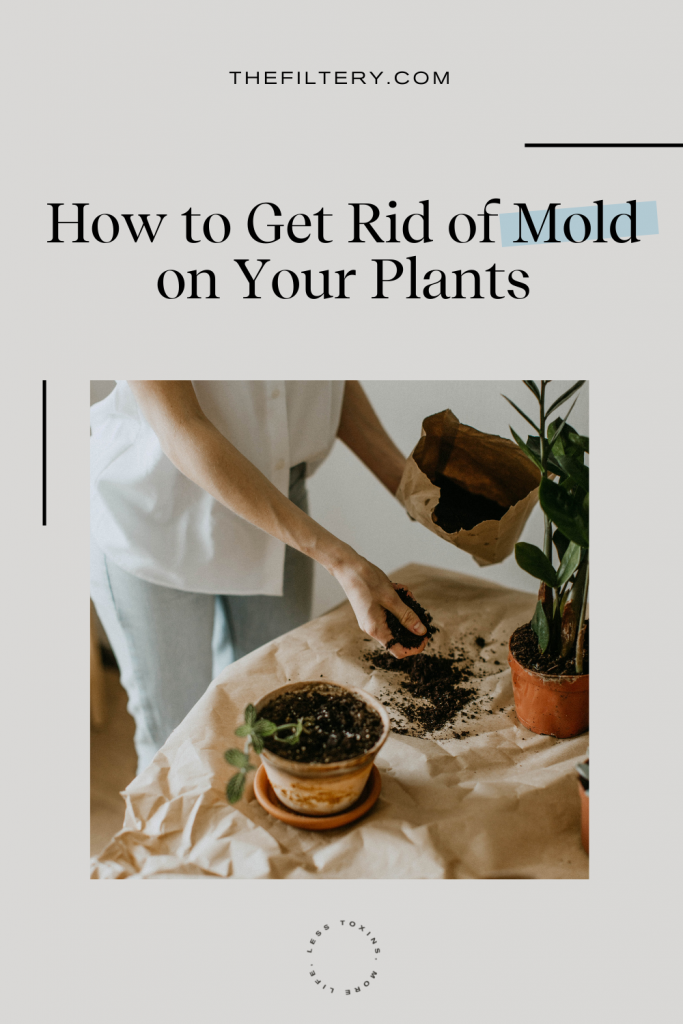
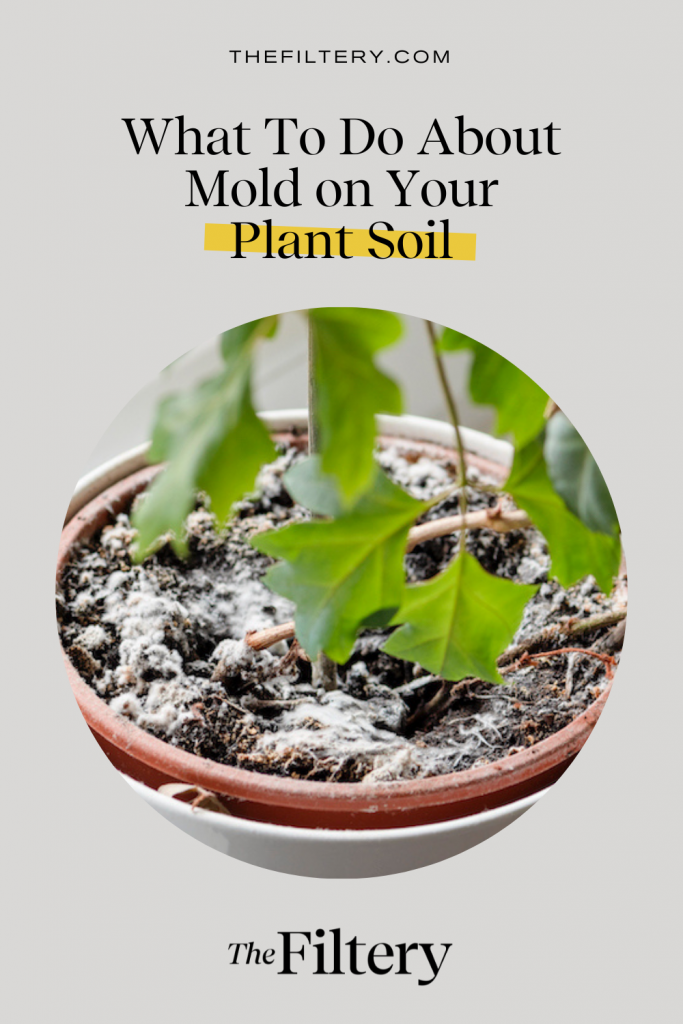
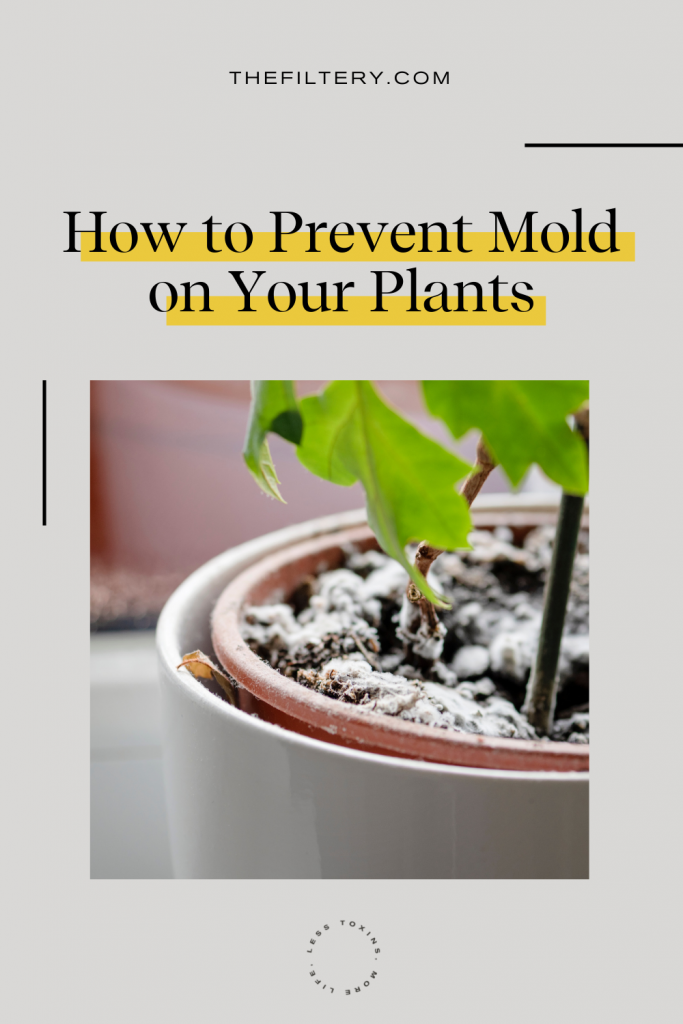
Image credits: cottonbro, Valeria Ushakova





